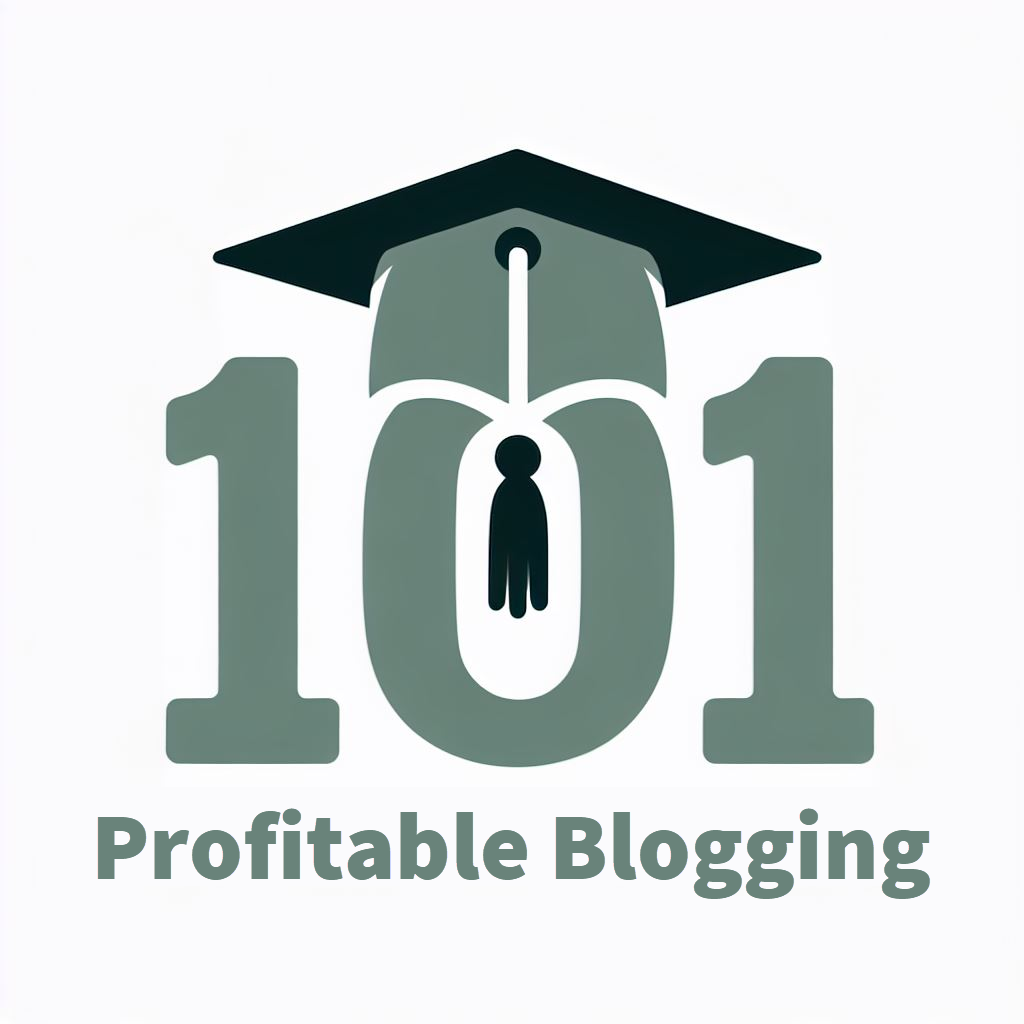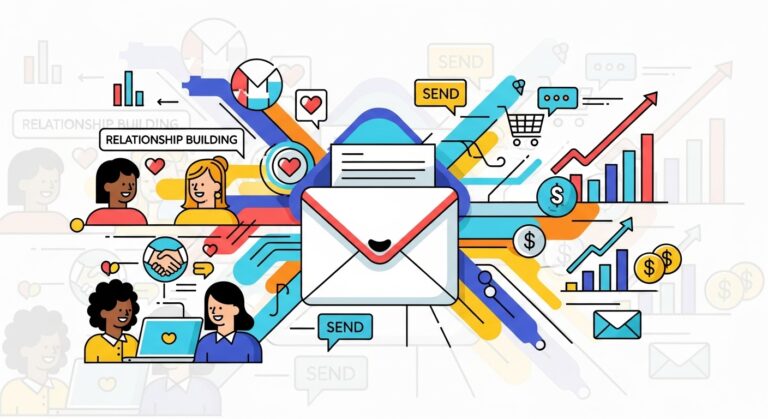Content Is King, but Profit Is Queen: Strategies for Creating High-Converting Blog Posts
Did you know that businesses that prioritize blogging are 13 times more likely to see a positive return on investment?
Crafting high-converting blog posts requires a strategic approach that balances engaging content with profit. From understanding your audience to optimizing for search engines, each step plays an essential role in driving conversions.
Stay tuned to discover key strategies that will not only captivate your readers but also boost your bottom line.
Understanding Your Audience
To create high-converting blog posts, understanding your audience is essential for engaging and resonating with them effectively. Knowing who your readers are, what they're interested in, and what problems they're trying to solve will help you tailor your content to meet their needs. Take the time to research your audience's demographics, interests, and behavior to create content that speaks directly to them. By understanding their preferences and pain points, you can craft blog posts that not only capture their attention but also drive them to take action.
Engaging with your audience through comments, surveys, and social media interactions can provide valuable insights into what resonates with them. Pay attention to the language they use, the topics they're passionate about, and the questions they frequently ask. This information will guide you in creating blog posts that are relevant, valuable, and appealing to your audience. Remember, the key to high-converting blog posts is understanding and connecting with your readers on a deeper level.
Keyword Research and SEO
Conducting thorough keyword research and implementing effective SEO strategies are essential steps in optimizing your blog posts for increased visibility and organic traffic. Keyword research involves identifying the specific words or phrases that your target audience is searching for on search engines. By understanding these keywords, you can tailor your content to match what your audience is looking for, increasing the chances of your blog posts ranking higher in search engine results.
To start your keyword research, consider using tools like Google Keyword Planner, SEMrush, or Ahrefs. These tools can help you discover relevant keywords, analyze search volumes, and assess the level of competition for each keyword. When selecting keywords, aim for a balance between high search volume and low competition to maximize your chances of ranking well.
Incorporating these keywords naturally into your blog posts won't only improve your search engine rankings but also make your content more valuable and relevant to your readers. Remember, SEO isn't just about keywords; it also involves optimizing your website's structure, improving loading speed, and creating high-quality content that keeps your audience engaged.
Compelling Headlines and Introductions
When crafting compelling headlines and introductions for your blog posts, capturing your audience's attention from the start is crucial for driving engagement and interest in your content. The headline is the first thing your readers see, so make it count. Here are three key elements to keep in mind when creating engaging headlines and introductions:
- Be Clear and Specific: Clearly convey what your blog post is about in the headline. Use specific language that hints at what readers can expect to learn or gain from reading your content.
- Invoke Curiosity: Spark curiosity by posing a question or presenting a surprising fact in your headline. Intrigue your audience to click through and continue reading.
- Keep It Concise and Compelling: Aim for brevity while still being impactful. Your introduction should complement the headline by providing a brief overview of what the blog post will cover, enticing readers to dive deeper into the content.
Engaging Visual Content
Capturing your audience's attention visually can greatly enhance the impact and engagement of your blog posts. Including compelling images, infographics, videos, and other visual elements not only makes your content more appealing but also helps convey your message more effectively. Visual content has the power to evoke emotions, simplify complex ideas, and create a memorable experience for your readers.
When selecting visuals for your blog posts, make sure they're relevant to your content and resonate with your audience. High-quality images that are clear and eye-catching can draw readers in and encourage them to explore your post further. Infographics are excellent for presenting data and statistics in a visually appealing format, making information easier to digest.
Videos are another powerful tool for engaging your audience. Whether it's a tutorial, interview, or product showcase, videos can increase dwell time on your blog and boost user interaction. Remember to optimize your visual content for SEO by using descriptive filenames, alt text, and captions to improve visibility and attract more organic traffic.
Structuring for Readability
To enhance the readability of your blog posts, consider structuring your content in a way that guides the reader smoothly through the information. Here are three key strategies to help you achieve this:
- Use Subheadings: Break down your content into sections with descriptive subheadings. This not only helps the reader navigate through the post but also gives them a quick overview of what to expect in each section.
- Utilize Bullet Points and Numbered Lists: When presenting lists or steps, use bullet points or numbers to make the information more scannable. This allows readers to grasp the main points at a glance, enhancing the overall readability of your post.
- Keep Paragraphs and Sentences Concise: Long paragraphs and complex sentences can make your content appear challenging. Keep your paragraphs short and focused, and use simple language to convey your ideas clearly. This approach makes it easier for readers to follow along and stay engaged with your content.
Call-to-Actions (CTAs)
Enhance reader engagement and drive desired actions by strategically incorporating effective Call-to-Actions (CTAs) throughout your blog posts. A well-crafted CTA serves as a guide for your readers, directing them on what steps to take next. Make your CTAs clear and compelling, encouraging visitors to interact further with your content. Whether it's inviting them to subscribe to your newsletter, download an e-book, or engage in a discussion, CTAs play an important role in converting readers into active participants.
To create powerful CTAs, consider using action-oriented language that prompts immediate responses. Phrases like 'Join our community today,' 'Start your journey now,' or 'Grab your exclusive offer' can instill a sense of urgency and excitement in your audience. Additionally, strategically placing CTAs throughout your blog posts, such as at the end of informative sections or within eye-catching buttons, can increase their visibility and effectiveness.
Leveraging Internal Links
Utilize internal links strategically within your blog posts to enhance reader navigation and encourage further exploration of related content. Internal links aren't just there for SEO; they can greatly improve the user experience on your site. Here's how you can leverage internal links effectively:
- Relevancy is Key: Link to other articles or pages on your blog that are closely related to the current topic. This helps readers dive deeper into the subject matter and keeps them engaged with your content.
- Strategic Placement: Incorporate internal links naturally within your content. Avoid overstuffing links, as this can be distracting and off-putting to readers. Make sure the anchor text is descriptive and relevant to the linked content.
- Create a Path: Guide your readers through a logical flow of information by strategically placing internal links. Lead them from one relevant article to another, keeping them on your site longer and increasing the chances of conversion.
Promoting Social Sharing
Encourage readers to easily share your blog posts across social media platforms with effective promotion strategies that amplify your content's reach. Social sharing is crucial for increasing your blog's visibility and driving traffic. Start by incorporating social sharing buttons prominently on your blog posts. These buttons make it simple for readers to share your content with just a click, expanding your post's reach to a broader audience.
Additionally, craft compelling call-to-action statements within your blog posts prompting readers to share your content if they found it valuable or informative. Engage with your audience by asking questions that encourage discussions and sharing. Remember, the more engaging and share-worthy your content is, the more likely it's to spread across various social platforms.
Utilize social media platforms to promote your blog posts further. Share snippets or quotes from your posts with a link back to the full article. Engage with your followers and participate in relevant communities to increase exposure. By actively promoting social sharing, you can greatly boost your blog's visibility and attract a wider audience.
Monitoring Analytics and Conversion Rates
To optimize your blog's performance and reach, start by analyzing analytics data and monitoring conversion rates closely. Understanding how your audience interacts with your content is key to improving your blog's effectiveness.
Here's how to make the most of monitoring analytics and conversion rates:
- Track Key Metrics: Keep an eye on important metrics like page views, bounce rate, and time spent on page to gauge user engagement.
- Identify Top Performing Content: Analyze which blog posts are driving the most conversions and tailor future content to replicate their success.
- Optimize Conversion Paths: Use data to refine the user journey on your blog, making it easier for visitors to convert into subscribers or customers.
Testing and Optimization
By conducting regular tests and implementing optimizations, you can enhance the performance and effectiveness of your blog content. Testing allows you to gather valuable data on what works best for your audience, enabling you to make informed decisions on how to improve your blog posts.
Start by testing different elements such as headlines, images, call-to-action buttons, and content layouts to see what resonates most with your readers.
Optimization is the key to refining your blog posts for maximum impact. Use the insights gained from testing to make strategic changes that can boost engagement and conversion rates. Whether it's adjusting the tone of your writing, optimizing for SEO keywords, or enhancing the visual appeal of your content, every tweak can make a difference in how your audience interacts with your blog.
Monetization Strategies
Enhancing your blog's revenue potential involves strategically implementing various monetization strategies that align with your content and audience. To maximize your earnings while maintaining the integrity of your blog, consider the following tips:
- Affiliate Marketing: Partner with brands that resonate with your audience and promote their products or services through affiliate links. Earn a commission for every sale or action made through your referral, leveraging your influence to boost income.
- Sponsored Content: Collaborate with companies willing to pay for sponsored blog posts or reviews. Guarantee transparency by clearly disclosing sponsored content to maintain trust with your readers while monetizing your platform.
- Digital Products: Create and sell digital products such as e-books, online courses, or exclusive content. Capitalize on your expertise and audience's interests to offer valuable resources that generate revenue independently of ads or sponsorships.
Frequently Asked Questions
How Can I Effectively Repurpose My Blog Content for Other Platforms and Mediums?
To effectively repurpose your blog content for other platforms and mediums, try creating visual graphics, turning articles into podcasts or videos, or crafting social media snippets. Maximize reach by tailoring content formats to suit diverse audience preferences.
What Are Some Creative Ways to Incorporate Interactive Elements Into My Blog Posts?
To boost engagement on your blog, try adding polls, quizzes, or interactive infographics. Encourage comments and discussions by asking thought-provoking questions. Incorporate videos or interactive images to make your content more dynamic and engaging.
How Can I Use User-Generated Content to Enhance the Credibility and Engagement of My Blog?
To boost credibility and engagement in your blog, incorporate user-generated content. Let your audience shine by sharing their stories, reviews, and experiences. It's like turning your readers into your best cheerleaders – authenticity guaranteed!
What Are Some Strategies for Collaborating With Influencers or Other Bloggers to Increase My Blog's Reach?
To boost your blog's reach, collaborate with influencers or bloggers. Engage with them authentically, offer value, and share each other's content. By tapping into their audiences, you'll expand your reach and credibility organically.
How Can I Leverage Email Marketing to Drive Traffic and Conversions From My Blog Posts?
To leverage email marketing for your blog, craft compelling subject lines, offer exclusive content, and personalize messages. Segment your email list, use clear call-to-actions, and track performance. Engage with subscribers, nurture relationships, and drive traffic for higher conversions.
Conclusion
To sum up, when crafting blog posts, remember that content is king, but profit is queen. By understanding your audience, utilizing SEO strategies, and focusing on engaging visuals and readability, you can boost conversion rates.
Did you know that blog posts with images get 94% more views than those without? Keep testing, optimizing, and implementing monetization strategies to make certain your blog posts aren't only high-converting but also profitable.







